Tobacco retailers were already facing a raft of new legislation before the New Year’s Day announcement concerning the raising of the minimum legal age for buying tobacco products from 16 to 18 from October 1.
The government’s continuing efforts to coerce more smokers into quitting could also see the introduction of shocking pictorial images on packs towards the end of the year, not to mention the banning of smoking in enclosed public places, as well as further legislation covering the sale of lighters.
"It will be a very busy year in terms of legislation and we will be keeping retailers very regularly updated because there is such a lot going on," says Iain Watkins, trade communications manager at Imperial Tobacco.
Despite these extra challenges, tobacco manufacturers believe forecourt retailers needn’t be too worried. "UK smokers are very resilient," says Watkins. "Over the past few years they have seen the appearance of their packs change, with big health warnings; the names of their brands changed if they had the words low tar or mild in them; and they’re used to being told where they can and can’t smoke. Despite this, tobacco is still a £12.9bn category."
Forecourts continue to take just under a 12% share of cigarette sales -worth £1.35bn - according to AC Nielsen figures. Added to this is another £122.4m-worth of sales from rolling tobacco, papers and cigars combined.
Latest research from HIM’s Convenience Tracking Programme shows that smokers visit forecourt stores 38% more often than non-smokers, buying at least two items per visit. And over the course of a year an individual smoker will spend £1,006 compared to a non-smoker’s £461.
With new public-smoking bans imminent, HIM also asked smokers whether or not this would make them change their habits. The results of this survey are, from a retailer’s perspective, much less positive, with 20% saying they will smoke less and 20% of these saying they will give up entirely.
Yet the manufacturers believe those in the retail sector should not be unduly concerned. They say that evidence from Ireland and Scotland, where bans are already in force, shows that the associated drop in tobacco sales will be predominantly absorbed by the licensed trade and any decline is likely to level out once people get used to the new laws.
Imperial Tobacco says that independent research shows that average cigarette consumption rates in Scotland for the three months ending June 2006 were the highest they had been since the corresponding period in 2005 - just over 20 a day.
"While the volume of cigarettes sold through Scottish retail outlets decreased by up to 10% immediately after the Budget and the introduction of the ban, in the six months that followed the average decline stabilised at 1.7%," says Watkins.
Jeremy Blackburn, trade communications manager for Gallaher, adds: "What we’ve seen so far is that smokers may smoke one or two less cigarettes a day where there are restrictions in place, but they don’t give up. They just choose their time to smoke depending on the environment they’re in."
What’s more, smokers who are adapting their behaviour can represent a significant profit opportunity. "In Ireland forecourt operators, off licences and c-stores saw sales of alcohol and tobacco increase after the ban. It’s still too early to assess if a similar trend has occurred in Scotland, but as the colder winter months close in we expect in-home entertaining to accelerate," says Watkins.
Meanwhile, Andrew Hardie, marketing manager at Swedish Match, supplier of the Swan range of rolling papers and filter tips, believes that rolling tobacco is likely to be least affected by the ban since it is often associated with at-home consumption.
Sales aside, another issue for forecourt operators will be making sure their own premises comply, since the ban - which comes into force at different times depending on which part of the UK you are in (see box) - prohibits smoking in all ’wholly or substantially enclosed’ places, including all work places.
== AGE CONCERN ==
Another hurdle retailers are set to face this year is a new minimum age for those buying tobacco products. The Department of Health has just announced that the age restriction will be raised from 16 to 18 in England and Wales from October 1. This followed the publication of a consultation document, called Consultation on Under-Age Sale of Tobacco, in which the government argued that having a uniform minimum age for tobacco, alcohol, fireworks, solvents and lighter refills would send out a more consistent health and safety message to teenagers.
As well as helping to cut the number of young smokers, the government also believes the change will simplify enforcement and make life easier for retailers when training staff. However, Iain Watkins at Imperial says it could cause problems for those at the tills who have to refuse to sell to 16- and 17-year-olds who were previously legally able to buy cigarettes. "It will have more of an effect on customer service than sales," he says.
Increasing the age limit has proved popular among the general public, with a MORI poll for the BBC in 2004 showing that 80% of adults were in favour. Retailers who sell to underage customers are also set to be targeted by tougher enforcement legislation. The preferred option for this is a ’negative licensing system’ whereby persistent offenders could be banned from selling tobacco products for up to a year.
Meanwhile, in Scotland, health minister Andy Kerr has said that legislation to raise the legal age for buying tobacco products to 18 will be put in place by February or March, although the law may not be implemented until after the elections in May. Northern Ireland could also follow suit in forthcoming legislation.
Pictorial on-pack health warnings had been due to be introduced in the UK in August, but this could now be delayed, according to the Department of Health. The 14 images to be used have been chosen following public consultation. Pictures already appear on packs in Canada, Brazil, Thailand and Australia. A survey in Canada, one of the most restrictive markets, found that more than 30% of smokers who’d quit had been encouraged to do so by the on-pack images.
Meanwhile, child resistant (CR) lighters will definitely need to be on retailers’ radar this year. New legislation comes into force in March, requiring all manufacturers to introduce child resistant mechanisms on their lighters with a new CR logo appearing on outer packaging to prove it. Novelty lighters that appeal to children are specifically banned. Retailers have until March 2008 to sell-through old stock, after which time non-compliant goods may be seized and fines issued for those who try to sell them.
== PREMIUM PROFITS ==
Meanwhile, premium cigarette brands continue to be the driver for forecourts, accounting for just over 40% of sales.
Gallaher’s Jeremy Blackburn says that while established premium brands like B&H Gold and Silk Cut continue to perform strongly, Camel, and in particular Camel Subtle, is showing strong growth in some urban areas. "It is a niche brand in terms of total market performance, but it’s very strong in areas like London and the south east. It’s very popular with young adults and students, so also does well in university areas," he says.
At the other end of the price scale, value or economy brands account for the next largest share of forecourt sales at 28.5%, up from 26.7% last year. Blackburn confirms: "There is a market for budget brands in forecourts but there is a lot of regionality attached, so it depends a lot on where your site is."
Both Gallaher and Imperial have targeted this price sector and report excellent growth for their respective brands, Sterling and Windsor Blue.
Sterling was relaunched and rolled out to all channels last January and offers a premium look and feel but at an affordable price. Gallaher says it’s the best-selling brand in the cheapest price sector and has achieved year-on-year growth of 44%. The brand’s national market share is 3.4%, but there are regions where it is particularly strong, such as the south west where it has nearly a 6% share.
Windsor Blue, says Imperial, is the UK’s fastest-growing cigarette brand. Also launched last January, it’s performing ahead of forecasts, having already achieved around a 2% share of the total market.
Watkins says: "More smokers are trading down to lower-priced cigarette brands due to continual duty increases. Windsor Blue is obviously well-positioned for smokers who are looking for a quality brand in the value and economy price sector."
== ROLL YOUR OWN ==
Rolling tobacco continues to perform well on forecourts, which account for 11% of total sales, worth £71.2m - up from £60.4m in 2005. The down-trading dynamic among smokers has seen the total RYO volume sold through all retail outlets grow by more than 12% over the past year.
Again, for forecourts the premium bias is very much evident, with over 64% of sales coming from higher-priced brands. And while 12.5g easily remains the best-selling pack size, with 60% of sales, larger formats, particularly 50g packs, are proving more popular.
An area where it seems forecourts are missing a trick is in rolling papers. While sales of loose tobacco in the sector increased last year, sales of the papers to put it in saw a slight decline. "Accessories, like rolling papers and filter tips, are all very high-margin products," says Imperial’s Watkins. "When a RYO smoker comes in to buy tobacco there’s an obvious opportunity to sell these extra products,".
== CIGARS ==
In cigars it’s miniatures that are proving the star performers for forecourts, accounting for 57% of sales and gaining share from small cigars, which account for 42% on forecourts and are the dominant size in the overall market.
James Higgs, head of marketing at Henri Wintermans, says miniatures offer smokers a more convenient option, particularly as the anti-smoking lobby has made it difficult to smoke larger cigars in public.
Gallaher’s Hamlet (small) remains the best-selling cigar brand for forecourts, followed by Henri Winterman’s Café Crème Blue (miniature), which is distributed by Imperial, and Hamlet Miniatures.
----
=== Tobacco Legislation ===
- March 11, 2007: all lighters manufactured or imported into the EU must be child resistant (CR).
- March 11, 2008: all lighters sold must be CR-compliant. Retailers have until this date to sell existing stock, after which any non-compliant lines may be seized and fines imposed.
- April 2, 2007: ban on smoking in enclosed public places in Wales.
- April 30, 2007: ban on smoking in enclosed public places in Northern Ireland.
- July 1, 2007: ban on smoking in enclosed public places in England.
----
=== Fast stats ===
- 16% of forecourt customers purchase cigarettes and on average they buy 2.3 items per trip.
- A forecourt cigarette shopper spends an average of £1,006 in a year. A non-smoker will spend just £461.
- 61% of forecourt cigarette shoppers are male.
- 50% are aged between 18 to 34.
- 37% of forecourt tobacco shoppers think price-marked packs mean the product is cheaper then normal.
- 38% of smokers will go elsewhere if their preferred brand is out of stock.
- 90% of forecourt staff feel comfortable asking for age identification.
(Source: HIM, CTP 2006)



















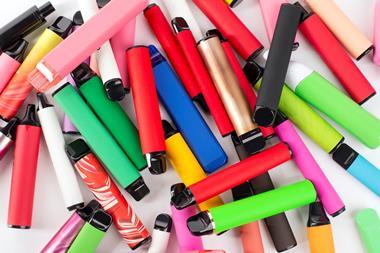
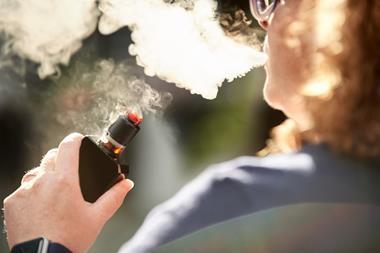
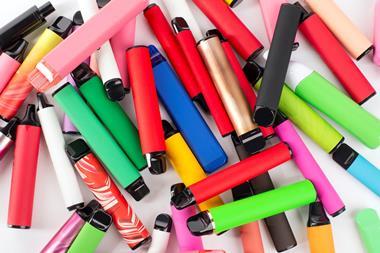
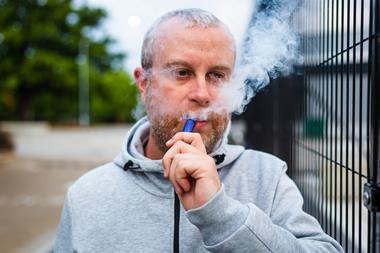


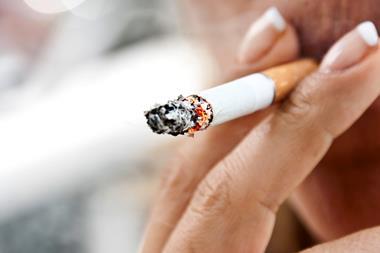



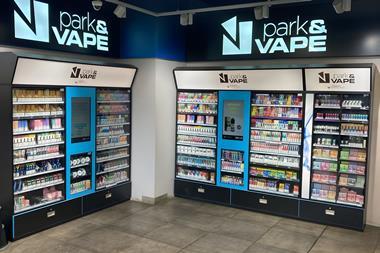
No comments yet